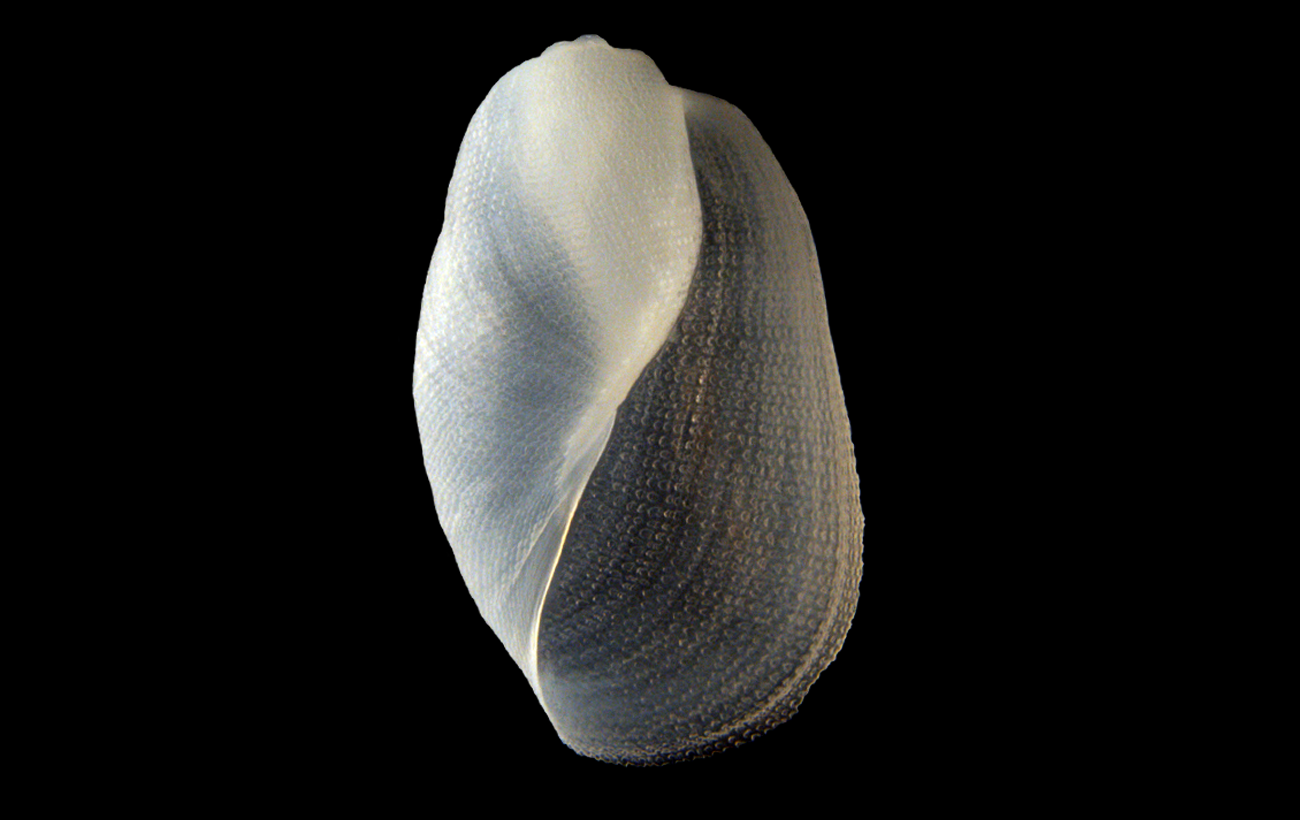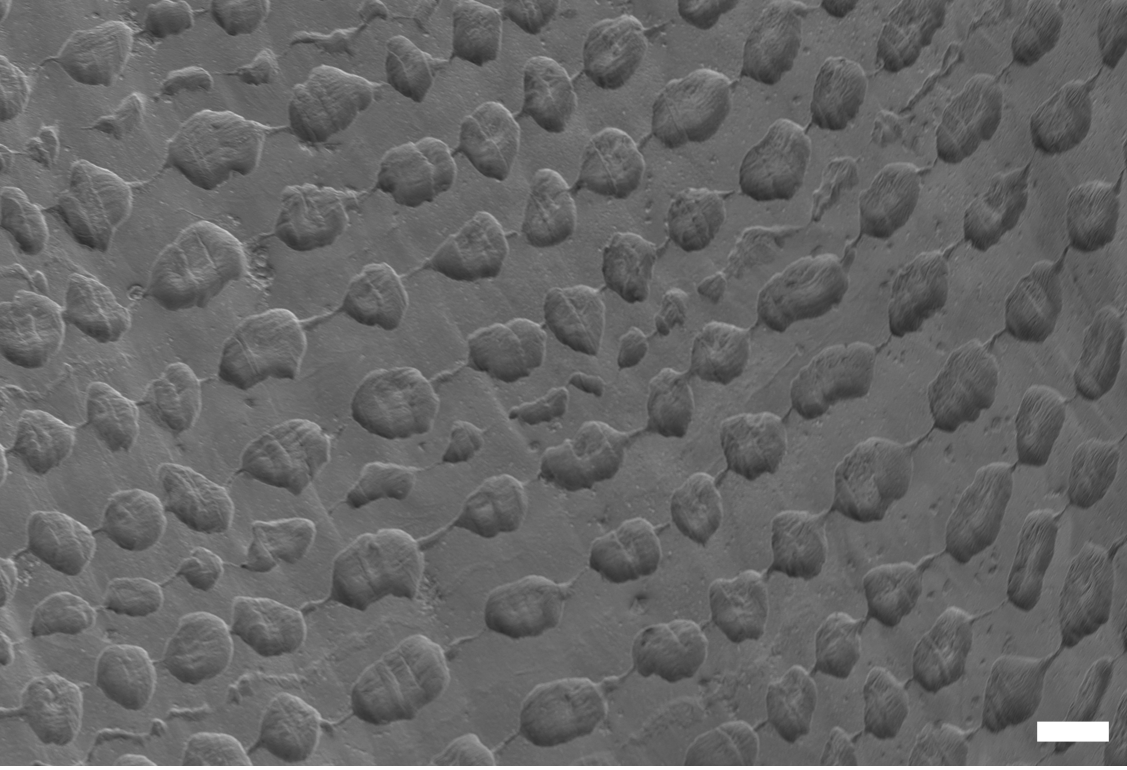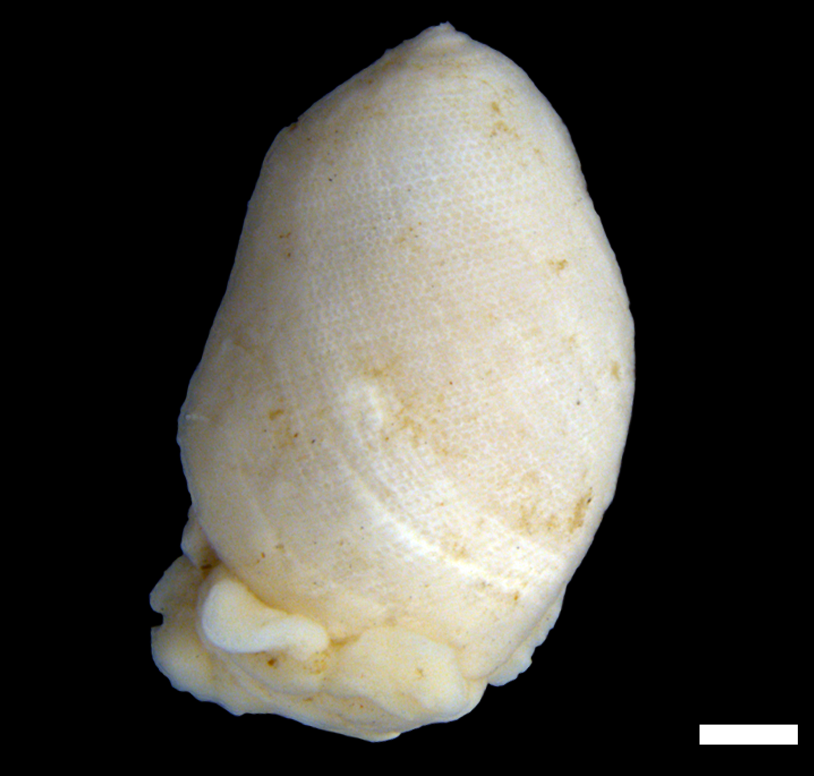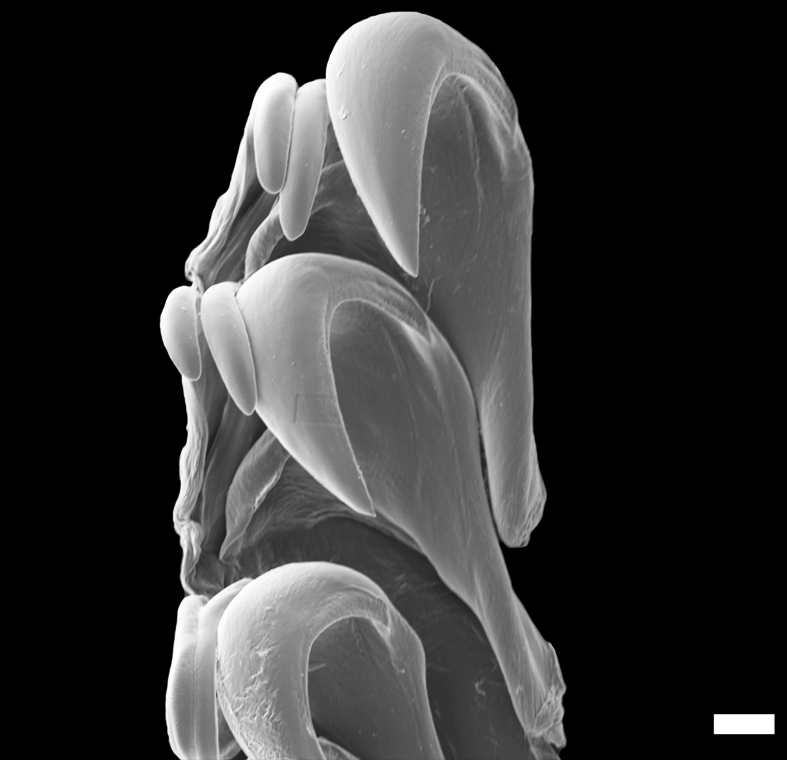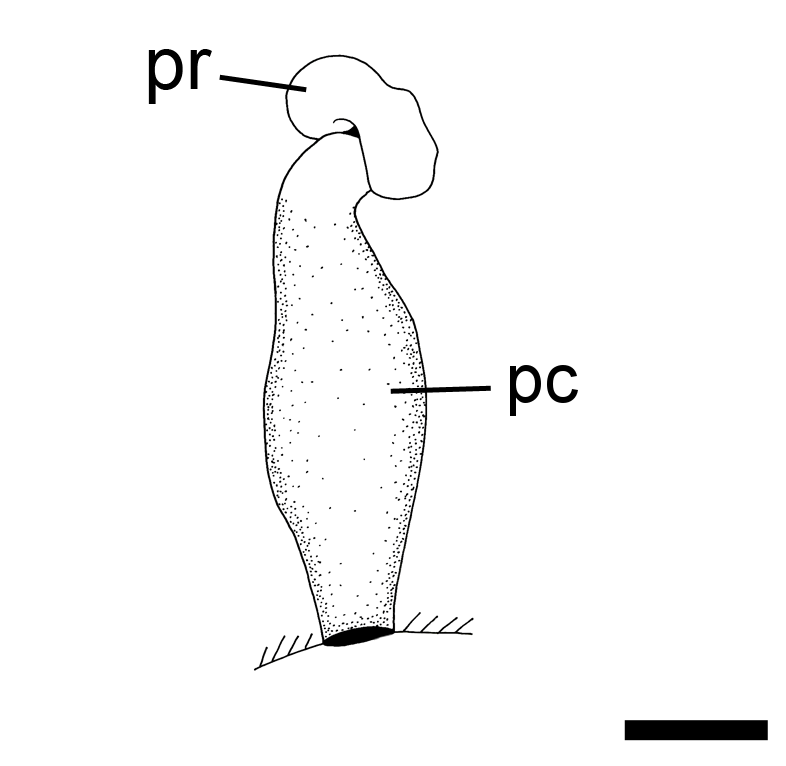Philine lima
Shell description
The thick shell is internal and may vary in colour from transparent to white. The shell is cylindrical and elongated-oval in shape when viewed from above. The opening is wide and the edge is faintly wavy (scalloped). The top of the shell (apex) bulges out from the shell, but is slightly sunken. The shell is slightly umbilicated. The shell surface is covered by a pattern consisting of fused pits that are connected by narrow grooves to form chainlike lines. The size of the shell varies between 2.6–7 mm.
Animal description
The body is white in colour, and the head shield is lobed towards the back, and a middle groove is present. The tissue covering the shell (mantle) is thick; however the pattern of the shell is visible through it. There are side extensions of the foot (parapodial lobes).
Anatomi
The radula consists of 13 rows of teeth with two outer lateral teeth and one inner lateral tooth on each side. No central tooth (rachidian) is present. The outer lateral teeth are curved with rounded tips and a broad base. The inner lateral teeth are curved with rounded tips and a broad base, the inner edge is smooth and does not have denticulation. The gizzard is rounded and not surrounded by muscle fibres. The gizzard plates are absent. The male reproductive system consists of a short, thick prostate connected to a tubular penis chamber.
Ecology
Occurs from 2 to 720 m on mud, mud with stones, gravel, shells, rotting plant debris, sand, and algae.
Geographical distribution
This species has a northern amphi-Atlantic distribution from Massachusetts, USA over Greenland, Svalbard to Murmansk, the White Sea, the Kara Sea and Franz Joseph Land. In Norway it is found northwards from Lofoten, but also deeper on the continental slope as far south as Ålesund.
References
Ohnheiser LT og Malaquias MAE (2013). Systematic revision of the gastropod family Philinidae (Mollusca: Cephalaspidea) in the northeast Atlantic Ocean with emphasis on the Scandinavian peninsula. Zoological Journal of the Linnean Society 167(2): 273-326. DOI: 10.1111/zoj.12000.
